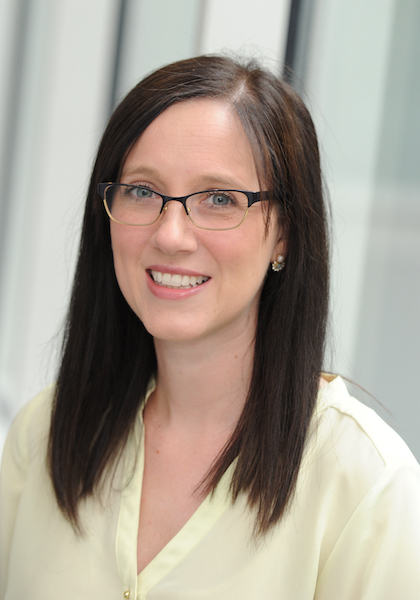Philip Selio, a solo practitioner, helps small businesses and entrepreneurs with their corporate law needs. He discusses managing all aspects of a solo shop -- and how it helps him better serve his clients who face similar challenges. Philip discusses client relationships, research processes, and social media as a tool to further build his client roster. He also shares how he thinks about his firm's potential growth. Philip is a 2019 graduate of California Western School of Law.
Transcript
Katya Valasek:
We're joined today by Philip Selio, a 2019 graduate of California Western School of Law, who runs a solo practice focused on business and entrepreneurs. We don't usually do career histories on the show, but you're in your third job in four years. Can you talk a bit about the jobs you had before you started your own law firm?
Philip Selio:
Yes, so after law school, I was fortunate in obtaining a position doing in house counsel. And I loved it. The day-to-day activities were always changing and it involved a lot of different areas of law – a little bit of employment, a little bit of trademarks, a little bit of commercial real estate. So I learned a lot there. But I noticed after, as I was approaching the end of the second year, I was kind of hitting the ceiling in regards to learning more. And I knew that if I wanted to learn more, I was going to have to move on to a firm or something of that nature. So then during year three I went to a small law firm practicing business and employment law. And I was fortunate that I was able to do both transactional and litigation. I was there actually just short of a year, but I really enjoyed it there.
While I was there, I realized two things. One is I realized I definitely didn't enjoy the billable hour and the structure behind that. Because, keep in mind, in-house counsel doesn't involve that. And then two is I realized while I did enjoy litigation to a degree, I definitely loved doing transactional work on a day-to-day basis. And I realized that's something that I wanted to pursue and I felt I had enough experience to possibly venture out. And so that's what I did and I started my solo practice approximately about a year ago. And it's a lot of work, but I've enjoyed it. Definitely have enjoyed it. So I feel, you know, hopefully, I made the right decision.
Katya Valasek:
So it's unusual for someone to leave law school and go straight in-house. Was that your goal? Did you know that was an unusual pathway to take?
Philip Selio:
I did, I did. I had heard over and over, people telling me don't count on that. Fast forward, they are definitely correct with that advice. I was lucky that the company that I worked for, I had previously worked for prior to law school in a different capacity. And so fortunately after law school, when I came back home, everything kind of just lined up and I was presented that opportunity You definitely have to be very assertive and aggressive in trying to pursue a role like that, because oftentimes they may not be available to recent grads.
Katya Valasek:
So you moved around quite a bit early on and ultimately decided to go out on your own. So you opened this firm and you called it Propel Law. Why did you choose that name instead of using your own?
Philip Selio:
The main reason was I wanted it to modernize the approach a little bit. I didn't want it to be the law offices of XYZ and kind of just following with the rest of the crowd. To me, it just stood out a little bit more and it was just a unique little spin. I liked that.
A second reason why is in the event that if the firm ever grows down the road, I think it's easier to bring in potential business partners without having to change the name. Whereas if you have the law offices of XYZ, every time that somebody comes and goes, there's more of a likelihood to have to change the name and the documents and everything that goes along with that.
Katya Valasek:
So you say when the firm grows, how big is your firm right now? Is it just you?
Philip Selio:
Oh yeah, currently I'm in solo practice and I've been open for just short of a year.
Katya Valasek:
Do you have a paralegal?
Philip Selio:
No, no I don't, not yet.
Katya Valasek:
So you are top to bottom the firm.
Philip Selio:
I'm yeah, attorney, marketing, accounting, and everything in between.
Katya Valasek:
Yeah, so really, really are a small business owner.
Philip Selio:
Yeah, but it's great though too in the sense that it provides you that experience to learn a little bit about everything. So you're not learning just the legal aspect, but you're learning actually how to run the business. And I think at least for me doing business law, it kind of helps me understand where the clients are coming from a little bit more because I'm in that same position in many ways. And so I know what it's like to wear a lot of different hats. And with that, I'm able to give a little bit more advice beyond just the legal aspect of it.
Katya Valasek:
So since you brought up your clients, I wanna learn more about them. Who are your clients? Who makes up your client list?
Philip Selio:
Predominantly my clients are small businesses and entrepreneurs. And then I have a few clients that are upcoming midsize businesses that... they're growing, but they're not quite at a level to have a full-time in-house counsel. So they bring me in as their outsourced in-house counsel as needed.
Katya Valasek:
So you're outside, inside counsel.
Philip Selio:
Exactly. Yeah.
Katya Valasek:
So talk to me a little bit about how you found your first client.
Philip Selio:
So my first client was my initial employer, whom I was in-house counsel for. We still kept in touch after I left. When they heard that I was planning on starting a law firm they asked me, “hey, you know, you’ve some work for us,” and so it worked out really well. It's definitely a different experience being on the other side of it whereas, you know, you have to bill your client and you know approach it a little bit differently.
Katya Valasek:
So that's interesting. Do you know why they approached you? Was it a conflict issue or?
Philip Selio:
No, they just needed some work done. And being that we had worked together in the past, they knew my work product, we knew each other and how we work in general., so it just worked out well in that regard. And I think a big part of it, too, is we already had that trust. And I can't stress enough, it's crucial for your clients to trust you in whatever area of law that you're practicing.
Generally speaking, most in-house counsel positions are generalists. They know a little bit about a lot, but they don't know a lot about a little, if that makes sense. So oftentimes, they'll know a little bit about a certain subject matter. But once they realize that it's escalating beyond that knowledge point, they're going to start referring work to other attorneys. And oftentimes you're so busy on the day-to-day level that once they have an attorney, as long as they enjoy your work product and enjoy working with you, and definitely equally as important, as long as your fees are reasonable, they're gonna continue to work with you.
Katya Valasek:
So if I follow this thread about being a generalist as an in-house counsel attorney, does that mean that since you're an outside inside counsel that you also are in many ways a generalist?
Philip Selio:
Yes, I would say, especially for small businesses, you're more of a generalist because you're doing a lot of the day-to-day business agreements, business formations, and business negotiations. But you're also doing a little bit of commercial lease reviews, easement agreements on the real estate side. You're prosecuting trademarks on the trademark end. Sometimes they have questions on privacy regarding their website. So oftentimes it evolves a little bit of everything on the day-to-day level of a business. But a little crevice I would like to add though is there is an exception to certain areas of in-house where there will be a specialist, predominantly in areas that are more regulated.
Katya Valasek:
The work that you do involves a lot of research. So I wanna understand more about how you even know what to research. When a client comes to you, they think they have a problem. How do you, first of all, identify the problem, and then how do you communicate to them what needs to happen next?
Philip Selio:
So first things first is your initial dialogue with the client. And it's asking the relevant questions. And then I really can't stress enough is it's listening, listening to what the client says. Because ultimately, your next set of questions is going to kind of be dictated on what they say. And a lot of clients initially will kind of give you just portions of the issue. So you have to ask them questions to kind of navigate them to give you the big picture problem in regard to help you solve it ultimately.
Katya Valasek:
You are early on in your career and you went out on your own. How did you find the confidence to know what questions to ask?
Philip Selio:
I think I'm still developing that. A lot of it is just through experience. There's no way around that at times. And then I think while you're researching, you'll be able to read in between the lines to a degree and start picking up what questions do I need to ask for this scenario or what kind of questions I need to ask to realize it's not going to be this scenario.
Katya Valasek:
So you found your first client by maintaining good relationships with a prior employer. What happened next? How did you find your next clients?
Philip Selio:
After that, I started advertising my firm on social media. And then otherwise, anyone that would listen, I let them know that I started a firm, let them know the type of work that I do. And little by little, very thankfully, I was receiving referrals. As time goes by, those referrals refer you new work they're after. And little by little, as time goes, that referral base starts growing. And then, at least in my type of work, certain clients become repeat clients because they have different needs that kind of come and go month by month. And so that kind of helps in regards to client development as well.
Katya Valasek:
I want to learn more about how you use social media to build a book of business because social media is great, it is free, but it is also a lot of work. You need to engage with the people that are following you and interacting with you. How do you take that from just an initial outreach to a potential client?
Philip Selio:
Usually when they initially will reach out, I'll just ask them what they need just to make sure that it falls within the areas that I'm practicing in. If it doesn't, then usually I'll refer them out to somebody that I know that does. But if they do, generally what happens is I offer free consultations. So first things first is we'll schedule that free consultation to open up that dialogue and determine what's the issue, what can we do, and how do we move forward in solving that.
Katya Valasek:
How often do you have to refer someone out after that initial contact?
Philip Selio:
It really depends. So an issue that I run into oftentimes is I focus predominantly on business transactional law. But oftentimes what happens is I'll get inquiries about business litigation matters. So I usually will explain to the client, “unfortunately, I don't handle that side of the practice. But let me refer you out to somebody that does.”
Katya Valasek:
So that's a lot of work then to sort through the inquiries and then you do that initial free consultation. When do you start charging your clients?
Philip Selio:
Usually after the consultation, the first thing I'll do is send out my engagement agreement. Your engagement agreement is essentially your legal services contract, which will state the type of work that we're going to do and all of the terms and conditions that revolve around that. So that's imperative that you have that signed and executed amongst you and your client because it protects both sides and in regards to the process and it also just puts both sides on the same page in regards to the work that's going to be done but also more importantly it portrays the work that you're not going to do for the client. And that's important because sometimes clients think you're going to do every single thing and they don't realize that only a portion or a chunk of that is the actual work that you're going to be moving forward with.
Katya Valasek:
That's such a good point. So do you bill by the hour? Do you work with a retainer? What are some of those specifics?
Philip Selio:
I predominantly charge on a flat rate basis. I charge a set amount dependent on the type of work that's being performed. And usually that'll consist of charging the client for the services along with any filing or processing fees. And I love that just because in general, I think it's more transparent for the client because they know upfront how much money they're going to be spending. And I know it works well for me because it saves time on billing everything, you know, per minute. So I think it's a win-win on both sides.
Katya Valasek:
How did you decide how to set your rates?
Philip Selio:
I think a lot of it just comes down to keeping tabs of how long an assignment takes you to do. And once you realize, you know, on average it takes, you know, three hours to do this, then you can base how much you want to charge.
Katya Valasek:
Have you ever made a big mistake in choosing the flat rate and like totally underestimated?
Philip Selio:
In the beginning, there's no way around it. There's a learning curve involved. When I was working in-house, there wasn't a billable element. So I already had an idea of how much time certain work would take. And then also it helped when I was at a law firm because, similarly, I was able to get an idea of how long certain assignments took on the billing structure. And that transferred over in regards to me calculating how much I should charge on a flat rate. But with that said, if certain assignments that pop up that are newer types of work that I'm doing. So, you know, in regards to that, there's kind of no way around it. Otherwise than trying to reach out to maybe a mentor or something along those lines that kind of give you some guidance.
Katya Valasek:
So you started out in-house counsel. Now you're outside in-house counsel for smaller companies. If we imagine that one of them were to really take off and grow, would you go back in-house or do you like having this wide variety of companies that you're working with?
Philip Selio:
That's the million dollar question. I don't know. I really don't know. I mean, I think there's pros and cons to both. I love having my own firm. It's something that I never, ever considered doing in the past. And it was never even on my radar. And so it's kind of funny how that worked out. But I'm really enjoying it. I think it offers a lot of flexibility that you might not otherwise have in a more traditional role. But at the same time, if you're working for a business that's growing, that provides opportunities in and of itself. You know, maybe management or maybe, you know, getting more involved with marketing or some of the executive decisions that are going on. And which could ultimately lead to other opportunities down the road. There's pros and cons at both. I guess I would have to think about that at that time, if it ever arose.
Katya Valasek:
So it's interesting because some of those interesting opportunities of going into a growing in-house position will also exist if you decide to grow your firm. Right? There would be a role for you there as well. And you started the conversation off saying that you, you were looking into the future when you chose your name at the possibility of growth and bringing in additional attorneys. Have you begun to think about looking for someone to join you?
Philip Selio:
I have, I have, but at this point it's more on the administrative level. But I have toyed around, I've had some discussions recently with working with some attorneys on an of-counsel basis. And for anybody that might be familiar, working with an attorney of counsel is working with an attorney on a contract basis, but you work with them on a much more regular basis and in conjunction. But working with some other attorneys would allow us to offer more services, whether that be employment, whether that be litigation. So it's a possibility.
Katya Valasek:
You mentioned a couple of times now that you're still learning and that you have made some mistakes as you've been finding your footing. How do you pick yourself back up? How do you find the confidence to go at it again the next day when you've made a misstep along the way?
Philip Selio:
When you make a mistake, first things first, look at how that mistake was made, what went wrong, and analyze it so that you avoid making that same mistake again. Along with that, you know, sometimes you just got to sleep on it and start fresh the next day. And that's all you can do. You have to approach it with that attitude, because if not, you're going to get stuck.
Katya Valasek:
So can you share an actual mistake that you recovered from?
Philip Selio:
Normally, at least within California, when you file Articles of Incorporation to incorporate your business, usually it's the incorporator that signs that document and then files it with the state. And then at some point you later you include the board of directors in the subsequent documents. An alternative to that is including the board members within the Articles of Incorporation itself, which is perfectly fine. But the little crevice to that is that each board member needs to sign the Articles of Incorporation along with the Incorporator. And so, at least in my experience, that's extremely rare. So when I had that document, just out of habit, I had the Incorporator sign it and I forgot to include the board members within that document. I sent it out, filed it, and then luckily I noticed right away when I was looking at my confirmation receipt from the state. I realized that I was supposed to include the board members here.
And so he first thing I did was I called the state just to give them a heads up on that. luckily they told me that they would place a hold on processing that and to go ahead and resubmit the updated form. And so from there I contacted my client, explained the situation, and kind of gave them the background information and let them know that, because of this particular type of Articles of Incorporation, the entire board needs to sign it. We were able to get the three board members to sign it. We resubmitted it, and luckily everything went smooth. I think the key to it is just making sure that you double check your work. And then I think also is make sure that you're transparent with your clients so that if an issue arises, you explain that there was a mistake made, but also explain what happened and how you're going to fix it.
Katya Valasek:
What would have happened if you didn't catch it?
Philip Selio:
It could have impacted the business if there was any type of dispute, whether that be through a lawsuit or whether that be internally between the different business partners. And at that point you would get litigator attorneys involved. They tend to look back at every single detail with a magnifying glass. And they're gonna look at did you cross every T? Did you dot every I? And they would say, they, wait a minute, the board never signed the Articles of Incorporation, thereby we're gonna argue that this document's invalid.”
Katya Valasek:
We're human, we make mistakes, but humans also get excited and love to do something that brings them joy. So what gets you up in the morning and eager to get into the office?
Philip Selio:
I think for me is one is just learning more about your craft and about your practice area. If you find an area that you really enjoy, you then, in my opinion, you start looking forward to learning and growing in that area of practice. So I really enjoy that. And then I really enjoy in particular with smaller clients, or at least this is where I see it more, but it's really nice when you're able to help a smaller business client. Because oftentimes it's their first business. and so it's nice to see them so excited and they might be a little nervous as well, but you see that on their face, that excitement. And so that's kind of nice to see that you're able to help them segue into their next steps.
Katya Valasek:
Well, that makes perfect sense because it's your first business too, right?
Philip Selio:
Yeah, yeah, exactly. So I can definitely resonate on those feelings.

 Katya Valasek
Katya Valasek







